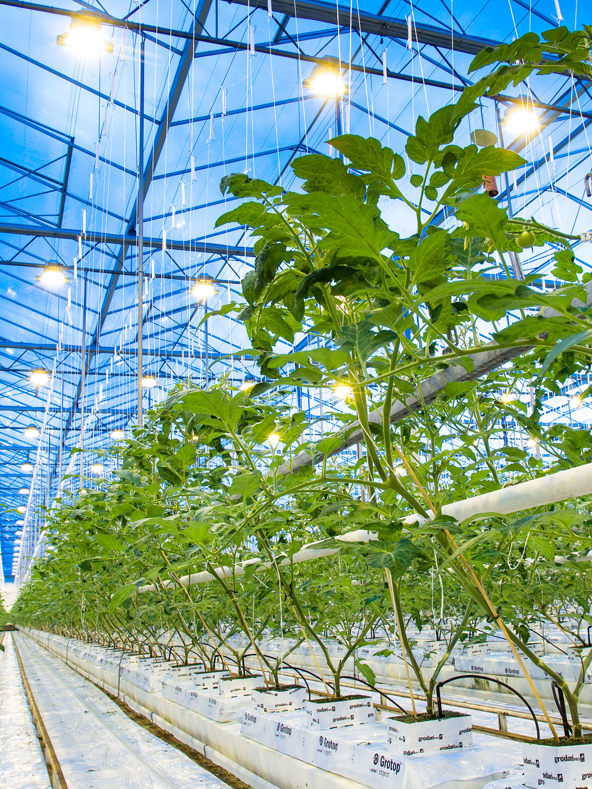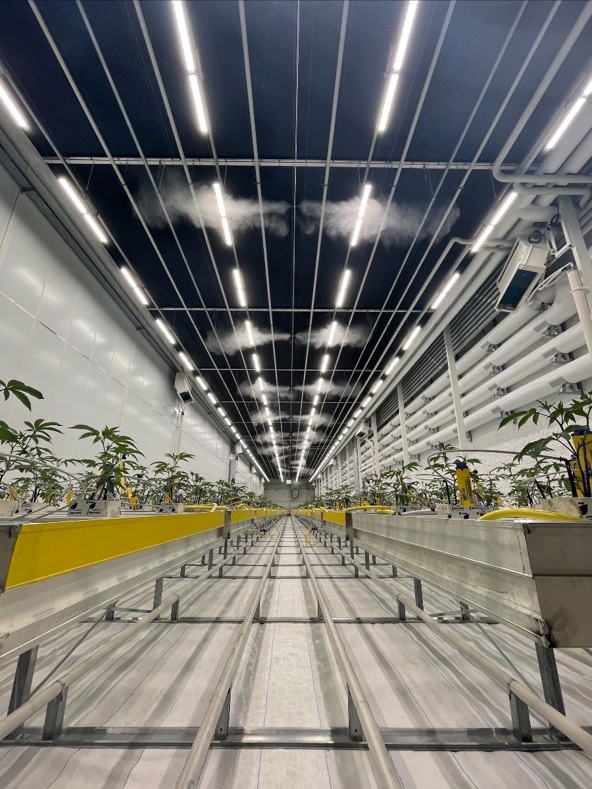Different crops have distinct greenhouse lighting system needs for optimal growth. Understanding these needs is crucial for a successful greenhouse and indoor growing operation. For instance, leafy greens like lettuce and herbs generally require lower light intensities, for these crops, minimal additional light could be sufficient. In contrast, fruiting plants like tomatoes and peppers need higher light intensities and a broader spectrum of light to support both vegetative growth and fruiting. For more specific details, visit the crop-specific grow light requirement guides linked here.
Greenhouse Grow Lights

Greenhouse Lighting: Essential for growth
Greenhouse Lighting is an essential factor for plant growth. Our greenhouses are designed to create an optimal environment for growing plants. Because natural sunlight is the cheapest source of light available, translucency of the greenhouses and greenhouse shading are important factors. However, natural greenhouse light is not always available in sufficient quantities or at the right time for optimal commercial products. This is where supplemental greenhouse lighting with grow lights comes in handy.
Greenhouse Grow light requirements per crop
Enhance plant growth with our greenhouse lighting system, utilizing artificial light. Achieve optimal conditions for your crops with precision-controlled lighting, maximizing yield and quality.

